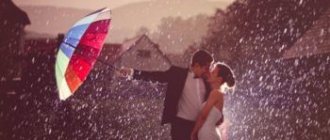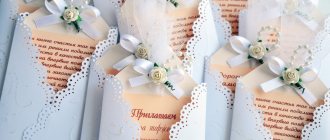First, let’s decide whether it’s worth filming in such weather at all. Many photographers find this idea unattractive, because there is a risk of ruining their equipment, and not everyone sees something truly beautiful in slushy and gray days. My advice: look around carefully, look for interesting stories. Believe me, rain is a particularly fertile time for creating unusual, atmospheric photographs.
But the safety of the camera should not confuse you and force you to give up shooting. There are several proven ways to protect equipment from moisture. The issue of security is very important, so we will consider it first.
Taking good photos in the rain safely and correctly
You don't have to wait for clear sunny days and good weather to take photos. In fact, going outside in the rain is a great way to take really interesting pictures, and to ensure that nothing happens to your camera, it’s enough to know the nuances of working with it in difficult weather conditions. Harry Guinness, a photography expert for How-To Geek, shares his experience. He will give 14 tips on how to take high-quality photographs in rainy weather without destroying your expensive camera.
“ Shooting in the rain ,” says Harry, “is the easiest way to get wet while practicing photography, but it’s by no means the only way. All the examples, tips and tricks I discuss in this article also apply if you're photographing breaking waves, taking long exposure shots of fast-flowing mountain rivers, waterfalls, or just getting wet with your camera in hand..."
Shooting landscapes in cloudy weather
Gray skies are usually associated with negativity. Many people complain about those days when there is not enough sunlight. It's easy to get depressed if it's constantly cloudy. But there is also a positive side to this weather.
The first thing to consider is that the term "gray sky" covers a variety of weather conditions, from thick, opaque clouds to delicate, scattered cloud layers on a blue sky. Each case gives you a unique chance.
What are the advantages of cloudy weather
Cloud layers help reduce contrast. Modern SLR cameras, for all their advantages, are prone to one drawback: the resulting images are often too contrasty, especially in bright sunlight. In cloudy weather there is no such problem.
Experienced photographers often refer to cloudy weather as a “softbox in the sky.” If you want to shoot a portrait or a figure in a doorway, the result will be much more attractive under a gray sky.
Gray skies create mood in landscape photographs. While we are all impressed by a picturesque landscape, with experience comes the desire to do something less ordinary, such as a view that expresses pathos and sadness. Such scenes are better complemented by dark skies.
Landscapes taken on a cloudy day often look great in black and white. In the absence of color, the tones are emphasized and the mood of the landscape becomes much more apparent. To maintain full image quality, shoot in color and then convert to black and white. Or you can maintain the color of the image, but deliberately reduce the saturation - such photos can look stunning.
fyletto/Depositphotos.com
6. Correct white balance
When shooting a gray sky, the important thing is that it is free of color casts. To ensure this, you must select the correct white balance. The AWB option is quite reliable. But to be sure of getting the results you want, select the Cloudy mode, which has a color temperature of 6,000 degrees Kelvin that matches the sky on a cloudy day.
7. Accented tones
In cloudy light, the focus of the image should be on the tones. Whether you intend to save your image in color or decide to convert it to black and white, it is the tones that will convey the mood. This is definitely more difficult to achieve in bright sunlight.
8. Shooting in the sun
Gray skies provide a unique opportunity to incorporate the sun directly into the photo without underexposure. While the sun is slightly obscured by clouds, it can be quite an interesting feature in the composition, something that can never be achieved on a sunny day.
9. Show hidden details
Many of the fine details of nature will look much brighter with a very pale gray sky in the background. This goes against many of the rules of landscape photography. But you will find that the modest beauty of leaves or reflections will become more apparent on a cloudy day.
10. Expressive sky
It's not always a good idea to shoot the sky when creating landscapes. Often an image can look much better without it at all. A flat and featureless sky is unlikely to add much to your photo.
Why Wet Conditions Are Good for Photography
photo: Harry Guinness
This photo of a temple in Moldova becomes much more interesting due to the reflection on the wet surface of the tiles
It's easy to take the same photos that everyone else is taking. Just go to the same places, at the same time (often at sunset) as others, and shoot. Check out this Instagram account to see just how bad the idea of generic photos can be.
On the other hand, it is not much more difficult to take original, creative photos.
Also, just shoot where other people can't shoot or when they don't, which is why rainy days can be great for photography. If everyone else is hunkering down indoors or not getting too close to the splashing water, this is an opportunity for you to take a photo they won't and stand out on Insta or photo sharing sites. see also
How to Take Good Car Photos at Night
Rainy days also make for more interesting photos. Rain and wet ground add different elements to your photos that are not present in dry weather. Reflections in puddles can give new perspectives and angles for playing with light and shadow and glare. All this creates a gloomy picture, but sometimes this is what needs to be created to correctly convey the mood. Now let's see how to take such a photo effectively and efficiently.
What accessories can you take on a photo walk in the rain?
You will definitely need an umbrella. But the master’s hands must be free, so you can buy an umbrella that is attached to the head. There are also more complex designs that fold out like the roof of a convertible.
Rubber boots and a raincoat with a hood are also great outfit ideas for this type of work. If you get carried away with filming, you might miss a puddle under your feet, so boots won't hurt.
A lighter option, suitable for the warm season, is a raincoat. Drape it over yourself so you don't get wet.
Take care of your camera too. Before going to the “wet business”, purchase a protective cover. After your walk, dry everything, including your camera.
Keeping your camera safe and easy to use in wet environments
photo: Harry Guinness
Look at the little raincoat for your camera
Water is hell for photography equipment (as for any electronics). Not only can it get in and damage the delicate electronics in your camera, but a few drops of water on your lens can make it impossible to continue shooting. If you want to take photos while standing in the rain, you need to take serious care to keep your gear safe, dry, and fit for use.
Here are some tips from Harry:
- Carry your camera with a rain cover: Store your camera in a weatherproof bag when not in use. A plastic trash bag will do in a pinch, but a better option is a suitable backpack with a waterproof fabric or what's called a rain cover. Speaking of rain covers...
- Buy a rain cover for your camera: Some professional cameras are weatherproof, but most consumer models (low-end, mid-range) are not. They won't break if they get a few drops of water on them, but still don't let them get wet. A rain cover will protect your camera from the elements while you use it;
- Stand under cover: If possible, stand under an overhang or ledge. This will make you and your camera happier—at least you won't get wet. You can also take photos from a window or car if you want to keep yourself dry and comfortable. Umbrellas also work, but they are a hassle, especially if it's windy. Just because you're shooting in the rain doesn't mean you have to get wet;
photo: Harry Guinness
It was a great place for photography, but due to the fact that the lens was wet, it was not possible to take a decent photo.
- Keep the front of your lens clean, otherwise you won't be able to take decent photos. Even a few drops can ruin your photos, so do your best to keep moisture away. Do not remove the lens cap (when not using the camera) and when removing it, point the camera away from direct raindrops, either while shooting or when not shooting. Also use a lens hood;
- Bring a lens cleaner with you; you'll need a few microfiber cloths to wipe off small droplets from your lens. For larger droplets or dirt, you'll need lens cleaning spray or lens wipes;
photo: peakdesign.com
Similar cases will protect the camera from moisture penetration
- Work quickly: If you are not properly covered, take the photo and then cover the camera or point it away from the rain as soon as possible. If you take too long to take pictures, the camera will likely get wet;
- Let your camera dry: When you get home, don't put your equipment in your bag or closet. Moisture on the surface can damage it just as effectively as rain. Fungus may even appear on the lenses.
Shooting stormy landscapes
By incorporating the weather into your landscape photos, you can convey more of the mood. This is especially true for stormy skies: they always make you think.
William Turner, famous for his seascapes, claimed that to create the painting “The Last Voyage of the Valiant,” he tied himself to the mast of the ship in the midst of a storm. We don't suggest going to such extreme measures, but being prepared to experience the elements can give you a better understanding of the landscape you're photographing.
How storms form
Storms form when an area of low pressure becomes surrounded by an area of high pressure, causing clouds to thicken. The temperature of the Earth's surface rises, in turn warming the air directly above it. It rises, and the cold air from above goes down. The convection process starts. The warmer the air, the higher it rises, forming magnificent cumulonimbus clouds.
What scenes to choose for a stormy sky
All landscapes are beautiful in their own way, but some will be better than others. If the clouds forming are especially impressive, make them the central subject of the photo, and let the foreground play a secondary role. To do this, make the horizon line lower.
A landscape with a clear horizon often looks great. If you want to include an object in your composition, make sure it looks small enough in relation to the sky.
If there is wind, use it to enhance the effect: long hair or loose clothing blowing in the wind always adds drama.
nejron/Depositphotos.com
1. Away from splashes
If you're photographing on the coast in stormy weather, take steps to protect your camera from splashes. Take special care of her backside - use your own body as a shield.
2. Gray or colored clouds
In stormy weather, you have different options. If you shoot in the middle of the day, the clouds will appear gray. Therefore, to ensure a cohesive photograph, make sure that the foreground has a similar limited palette. On the contrary, at sunset or sunrise you can get amazing colorful skies.
3. Protection from the elements
Remember: dust can also cause serious damage to equipment. Protect your camera not only from splashes, but also from gusts of wind.
4. Bright sky balance
Use a neutral density filter. It will allow you to balance the foreground exposure with a much lighter sky. If the sun is at right angles, exposure may be uneven across the sky. In this case, place the ND filter horizontally.
5. Scenery selection
One of the most important aspects of landscape weather photography is choosing a good combination of sky and foreground.
farvatar/Depositphotos.com
How to edit photos taken in the rain
Most often, the pictures are slightly dark and unclear. Often required
- add some light;
- add a little contrast;
- enhance color rendering;
- increase sharpness.
For processing, use Photoshop, but if you are not strong in it, then Lightroom will do. Some tools in photo editors allow you to make raindrops clearer and more visible, because it is for their sake that everything was started.
Having snapped several similar frames in color, you can, after enhancing their characteristics:
- use a black and white filter;
- or reduce color saturation as much as possible.
Frames processed in this way often look simply amazing.
Adjust your hair and makeup
Inclement weather also means high humidity, so avoid straightened hair as it will start to frizz. If, on the contrary, you want romantic curls, consult a stylist. Some hair does not hold the curl well, and in the rain it will completely disappear. The best hairstyle for a wedding in the rain is hair tied up or in a braid.
Ashley Ludaescher Photography
Austin Gros Photography
Makeup should also be adjusted to take into account humidity; the first to give up are mascara, foundation and lipstick. Talk to a makeup artist and let her choose waterproof options.
What to do to avoid mistakes?
- When shooting with a DSLR, it is important to understand that the device creates unwanted vibrations due to the sudden raising/lowering of the mirror, which leads to a decrease in the sharpness of the frame. To avoid this, use a tripod on which you can hang a heavy load for greater stability.
- Distorted color rendition spoils the viewing experience of a photo. Always check and adjust the WB (white balance) settings appropriate to the situation.
- The background is very important in the perception of the picture, so in no case should it irritate or discourage viewing. It’s better to walk around your subject a thousand times to choose a good angle than to waste time replacing the background in Photoshop. It is especially important to avoid horizontal pipes and overhead power lines, which are an integral part of urban infrastructure. If it is impossible to get around this obstacle, blur the background. To do this, select the maximum aperture value and move the subject away from the background.
- Often, novice photographers, without noticing it themselves, conditionally divide the frame into two parts. As a rule, the dividing line is the horizon. To prevent this from happening, mentally divide the photo into thirds, giving two units to the bottom.
- It happens that the colors in the frame openly conflict with each other, thereby irritating the viewer. If you can't reduce your subjects to a single color scheme, shoot in black and white.
- When more light falls on the central part of the sensor, unwanted vignetting appears at the edges of the frame. You can get rid of this by increasing the focal length and cropping the photo.
- The appearance of a moire pattern in photographs is due to the coincidence of the pattern on the fabric or background with the size of the matrix cell. This phenomenon can be observed by photographing, for example, a person in striped clothes. To avoid this effect, change the scale of the plan.
Also, don’t forget that it is not at all advisable to keep photographic equipment in the open rain. If you really want to shoot in the rain, secure your camera. Either buy special rain covers for your camera or use an umbrella. But always be extremely careful!
Rubber Shoes
Rubber boots of unusual colors are also suitable for newlyweds with a sense of humor. Imagine the bride in a classic white dress, trimmed with exciting lace on the skirt, from under which peeks out playful polka-dot ankle boots , the tone of which matches the color of the tie of the excited husband.
Polka dot ankle boots for a wedding photo shoot
Believe me, no one else will have such photos!
If your photo shoot also includes bridesmaids, the color of their original rubber shoes may differ from yours.
For the best shots, you can run through the puddles, splashing them and enjoying the uniqueness of the moment. A professional photographer will be able to capture an incredible number of moments that will become the best in your photo shoot. Millions of splashes, joyful faces, kisses against the background of the “flowing” sky, and also against the background of the evening, with different lighting - these will be the best moments of your life!
Dress for the weather
Most of all, rain can annoy a wedding dress - a dirty hem heavy with moisture will not decorate even Miss Universe. Provide a backup option or immediately choose an outfit that will suffer less from bad weather. In this case, you will have to say no to a full skirt and a long train, giving preference to light fabrics or even a short dress.
Carrie King Photographer
Shoes will suffer just as much, so decide whether to take spare shoes or wear boots. Yes, rubber boots can look cool:
Simple Revival Photography/Verman Photography
Make sure you have a roof over your head
Summer weddings often take place outdoors. Don't let the rain spoil the pleasure of the outdoor holiday - meet it fully armed. Talk to site representatives. If your event is not their first, much has already been provided for in case of rain. Once you understand what the restaurant will offer, decide what you should add yourself. For an outdoor wedding, it is important that the participants are dry and warm. Therefore, if the banquet takes place on an open veranda, then it must have a roof. There is no roof - let there be an awning or a tent. It will also come in handy in case of heat; sitting under the scorching sun is not much more pleasant than sitting in the rain. Rainy weather often gets chilly, so if the venue doesn't have outdoor heaters, it may be worth renting them.
Wittig And Beale Photography
Ryan Ray Photography
Think about plan B
Imagine it will rain all day - what will you do? Won't you go for a walk or will you cut it short? How will you conduct the photo shoot? Where will you hide in case of rain? Find out from the restaurant how much earlier than planned you can arrive in case of bad weather. Some snacks will probably be ready before the official banquet, so guests won’t go hungry.
Jon Schaaf Photography
Details
Equipment for a photo shoot is the main component
Having decided on the issue of moisture protection, decide on the exposure time. An excellent solution for shooting rain would be a long one, and a short one would be for shooting individual drops, stains on the water and bubbles.
As a rule, in gloomy weather, natural light tends to be at its best.
Based on this, you will need additional artificial lighting - this will allow you to achieve excellent, clear photographs. You get interesting shots if you shoot the reflection on the water. It is important to correctly determine the angle of the camera. If you shoot heavy rain, this natural phenomenon will give them originality and realism. A flash placed in the background of the newlyweds will help make the raindrops stand out more clearly.
The night lights look perfect and mesmerizing in the photographs. Shooting against the backdrop of city lights and sparkling shop windows will undoubtedly surprise even the most demanding newlyweds with their results.
For many, a gloomy sky of gray shades is associated with a gloomy mood
... however, experienced photography specialists focus on it. Bright and happy newlyweds look more impressive against a gray sky than a clear one.
Such a natural phenomenon as a rainbow will decorate any photos and make them mesmerizing and intriguing. Those couples who can take pictures against the backdrop of a rainbow during their photo shoot will be very lucky.
What to do if bad weather catches you unexpectedly? You can have a photo shoot indoors:
— A photo studio is the most common option. Choosing a studio with a beautiful interior and additional light is quite possible. By the way, many photographers consider this option the most optimal.
— Art galleries, ancient palaces, museums, theaters, antique salons are an excellent solution, however, you must take into account that you will need permission from the administration of the establishment. Photos taken in rooms with a beautiful interior will look unusual, elegant and luxurious.
— Restaurants and bars are one of the most popular options for capturing newlyweds in a cozy and warm environment. In the summer, excellent shots can be taken on the open terrace or veranda.
— Many shopping complexes have interesting architecture, as well as huge areas, which makes it possible to conduct a photo shoot regardless of the number of surrounding audiences.
— A hotel room that can be booked for the first wedding night can also be perfectly used for a wedding photo shoot.
— A car is a win-win option for rainy inclement weather. Photos against the background of wet glass are very original and mysterious.
For a photo shoot, choosing the right angle is very important.
Of course, for an experienced photographer, choosing the most advantageous poses for exclusive shots is not difficult, but you should keep in mind that there are several points that will ensure one hundred percent success:
- Face to face. Photos in which the newlyweds look at each other with loving glances are the most romantic, regardless of whether they are a long shot or a close-up.
- Holding each other's hands, you can walk along a park alley in the rain or just stand hugging each other under one umbrella. It is worth making sure that there are no unnecessary people in the frame, then the pictures will be much more interesting. The feeling that there is no one else except two lovers and the rain makes the photographs more tender and touching.
- The groom carries his beloved in his arms. These types of photos require confidence in your abilities, as good photos will require you to pose in this position for some time. But the photos will look great and romantic.
- Embrace. A “separate world” created under an umbrella will give the newlyweds beautiful photographs full of romance.
- Kisses - they come in completely different forms: from modest and tender to passionate. Kisses on the forehead or temple look very touching. Kisses under a veil look romantic and intriguing.
Camera settings
Poor lighting requires special measures. I will give average values that can be used as base values. It is impossible to say that they are suitable in all cases, since it all depends on many factors, time of year, hours of the day, what you are going to shoot, and so on.
If you have at least one fast lens in your arsenal with the ability to set an aperture value from f/1.8 or f/2.8, this is already good. This optics allows you to transmit more light to the matrix and take photographs without using a tripod or flash, provided that you need a shallow depth of field. And on average, 3.5-5.6 is quite natural.
But what if there is no lens with this property? You can achieve decent results by raising the ISO and shutter speed.
The optimal ISO value under such conditions is considered to be 200-400 units. This range allows you to increase brightness while avoiding the appearance of noise (grain) and unnatural shades in the photo. If that's not enough for you, go higher, but remember, don't go higher than 800 if you have a crop factor camera.
The shutter speed should be between 1/60-1/125 sec. If the shutter speed is longer than 1/60, it is important to remember that this will lead to a drop in sharpness and the appearance of movement. To shoot at longer shutter speeds, you can't do without a tripod!
If the conditions do not allow you to do without additional lighting, it is worth considering that the colors may turn out cooler than in reality, so use a diffuser or reflector with a warm tint if, for example, you are shooting a portrait.











